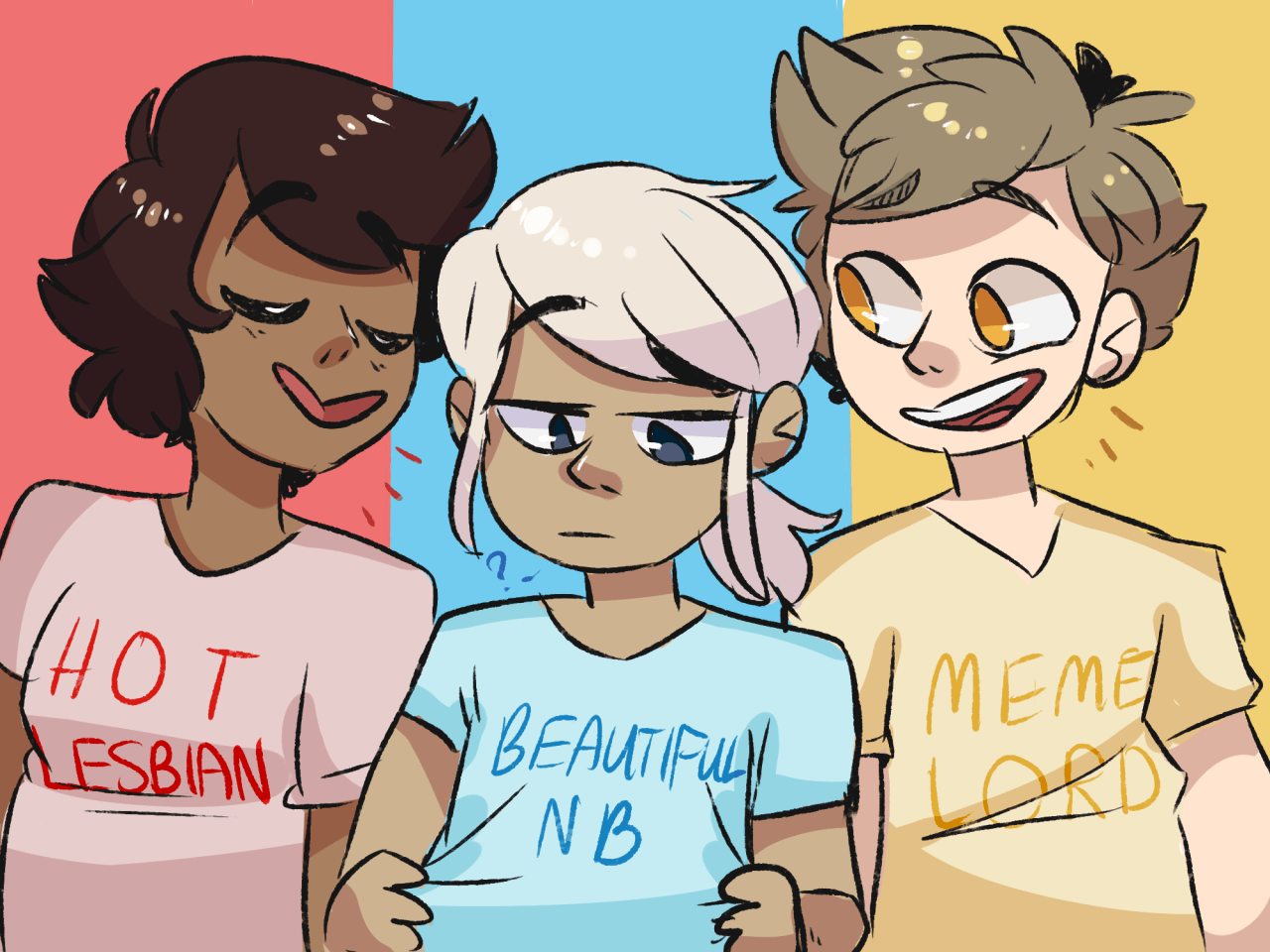
Art by Arieryn
When Pokémon GO was launched last month, millions of people worldwide found themselves experiencing the joys of their favorite childhood game in the real world. We got to choose our favorite starter, head out on the roads, and catch our first of thousands of Pidgeys–just like the trainers we played as when we were kids. The first unfamiliar experience came when we hit level 5 and went to our first gym. We were all told to pick one of three teams–Valor, Mystic, or Instinct–and shown the silhouettes of each team’s leader. We all made our decisions one way or another, but little did we expect how important that early choice would be.
When it was my turn to pick a team, I was joking with a friend of mine about which team we should declare to be “Team Trans.” We talked about choosing Team Instinct, before settling on Team Valor based on our conclusion that the silhouette of Valor’s leader looked the queerest. We had no clue how prescient our joke would be.
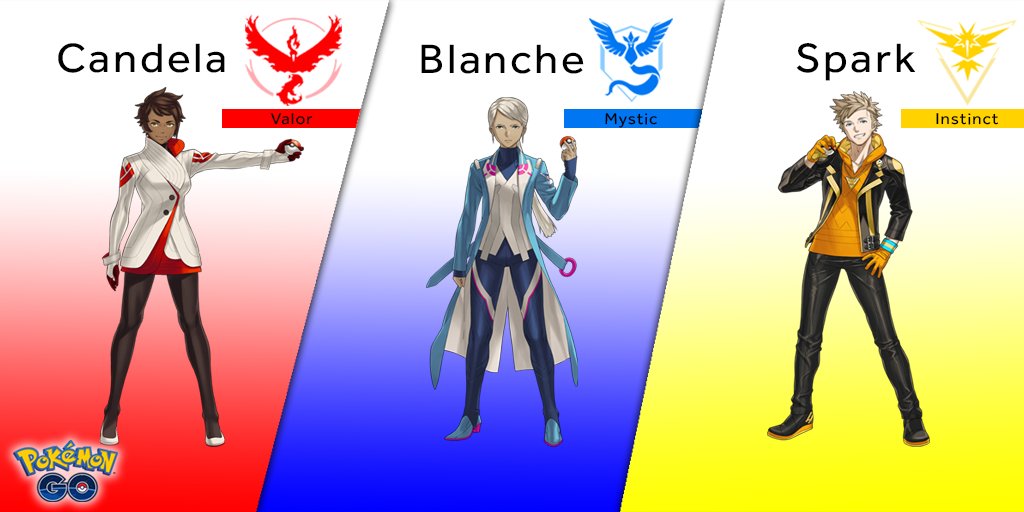
via Niantic
On July 24th during San Diego Comic Con, Niantic pulled back the drapes and revealed the designs for the three team leaders–Candela, Blanche, and Spark. For many players, the reveal meant nothing more than giving a face and a name to the team they were dedicated to fighting for. But for the transgender community, the reveal was much more. We were treated to leaders who looked like us. It appeared that we had been given representation! Within hours, a whole fandom had developed within transgender communities on the internet, complete with widely agreed upon head-canons regarding the details of the lives of the leaders.
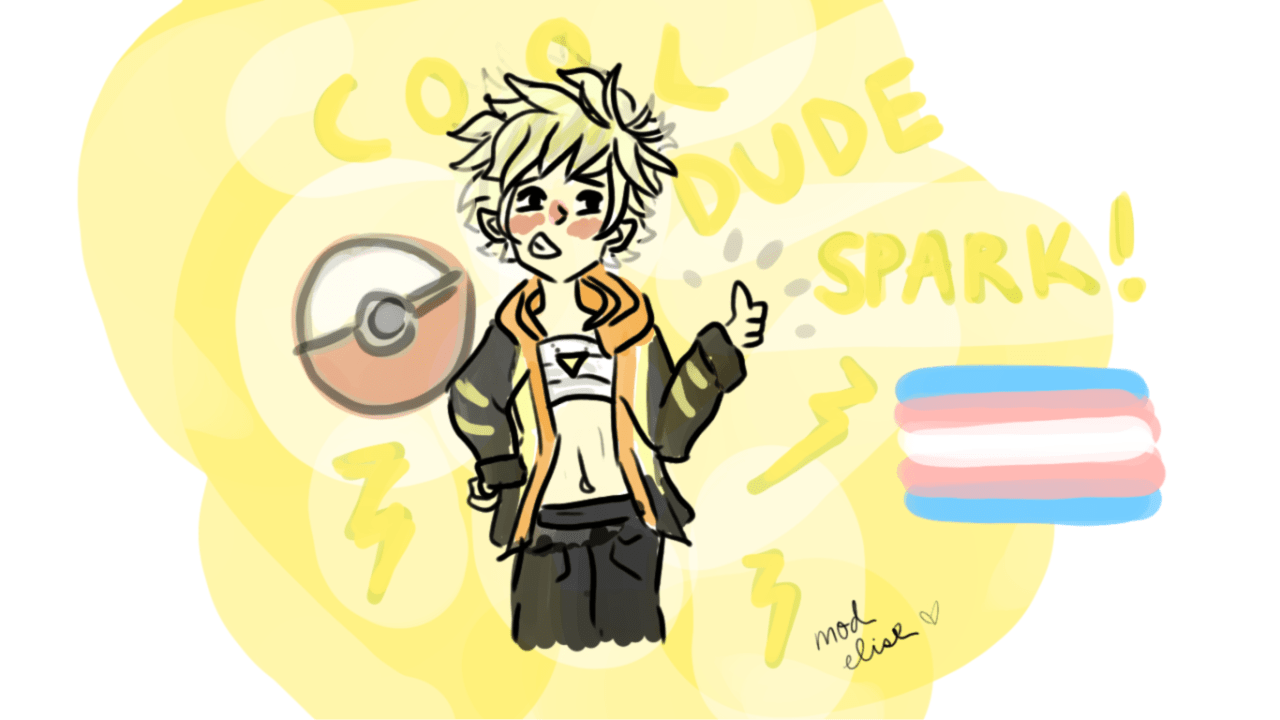
Art via All Your Kin Needs
In particular, much attention was paid to the fact that Blanche’s outfit consists entirely of blue, white, and purple–very close to the transgender pride flag colors of blue, white, and pink. That, combined with their androgynous appearance, led many of us to the headcanon that Blanche is non-binary. People also picked up on Spark’s youthful and androgynous appearance and headcanoned him as a trans man. The general consensus that Spark is a dork and more interested in memes than relationships has led many asexual people to headcanon him as ace as well. And while there is definitely some debate regarding whether or not Candela is a trans woman or a cis woman–I fully believe she is trans, for what it’s worth–there is one thing that practically all of the community agrees on: that Candela is gay. In particular (working to subvert the heated rivalry that has emerged between Team Valor and Team Mystic players) a lot of people believe that Candela is in a gay relationship with Blanche.
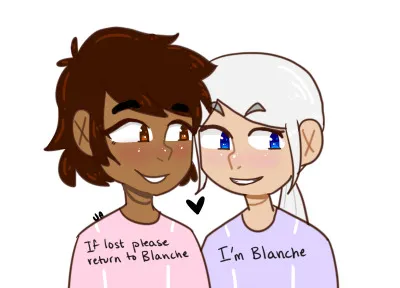
Art by Concertos
It is true Niantic has made no statement claiming that Candela, Blanche, and/or Spark were designed to be transgender, and it is highly unlikely that they ever will. It would be amazing for Pokémon Go to have canon transgender characters–especially as characters in positions of power, when so often transgender people are portrayed in media as hopeless and suffering. However, it is just as important, possibly even more important, that such an active transgender fandom community (complete with detailed headcanons) has evolved around this game.
We are living in a time where transgender people are finally beginning to receive representation in the media. Yet the narratives that their characters occupy are often very narrow. Transgender characters are often played by cisgender actors–Jeffrey Tambor in Transparent, Jared Leto in Dallas Buyers Club, Eddie Redmayne in The Danish Girl, etc.–perpetuating the stereotype that trans women are men in drag. Even when trans characters are played by trans people, we are given a narrow range of stories. Perhaps most striking is the fact that virtually all trans people portrayed in the media are portrayed as heterosexual. When the trans community is given canonical representation in the media we get so see people who look like us, but our narratives remain controlled by others–usually cisgender writers.
Headcanons, on the other hand, allow us to create our own stories within those frameworks. We get to decide who we want the characters to be, and we can shape them to be more representative of who we are. For transgender people, this means that we can create stories about characters that express a wider variety of transgender experiences. We can create transgender characters that are queer, like Blanche and their relationship with Candela. We can also create identities that are practically never given representation, like finding a trans-masculine asexual character in Spark. Headcanoning also allows for a more sensitive portrayal of mental health and disability then we are often given with canon representation; many autistic people have claimed Spark as one of their own. Headcanons might not be “official,” but they allow us to craft the stories that we’d like to see, with characters who are more like us than we’re afforded regularly.
None of the team leaders are canonically trans, but the inclusion of ambiguously gendered leaders–coupled with the fact the game replaced choosing a gender with choosing a style–signals that Niantic has designed Pokémon GO to have more acceptance of gender variance than previous Pokémon games. The transgender community has latched onto this increased fluidity and used it as a jumping point to create characters that represent our transgender experiences. There are lots more transgender stories that need telling. Hopefully the headcanons will continue until we’ve told ’em all!
Want more stories like this? Become a subscriber and support the site!
Jes Grobman is a transgender writer and educator living in Northampton, Massachusetts. An activist for five years in Washington, DC, she co-founded DC Trans Power, an organization that worked to empower and fight for transgender people, and hosted a monthly open-mic fundraiser by and for the transgender community. She has given talks on transgender issues at colleges across the United States. Recently she has been writing about the issues that exist at the intersections of transgender identity, mental health, and disability. As recognition for her achievements, The Advocate Magazine named Jes one of the 25 Trans Pioneers of 2015. You can regret following her as @Transpanicked on Twitter or check out her website at JesGrobman.com.
—The Mary Sue has a strict comment policy that forbids, but is not limited to, personal insults toward anyone, hate speech, and trolling.—
Follow The Mary Sue on Twitter, Facebook, Tumblr, Pinterest, & Google+.



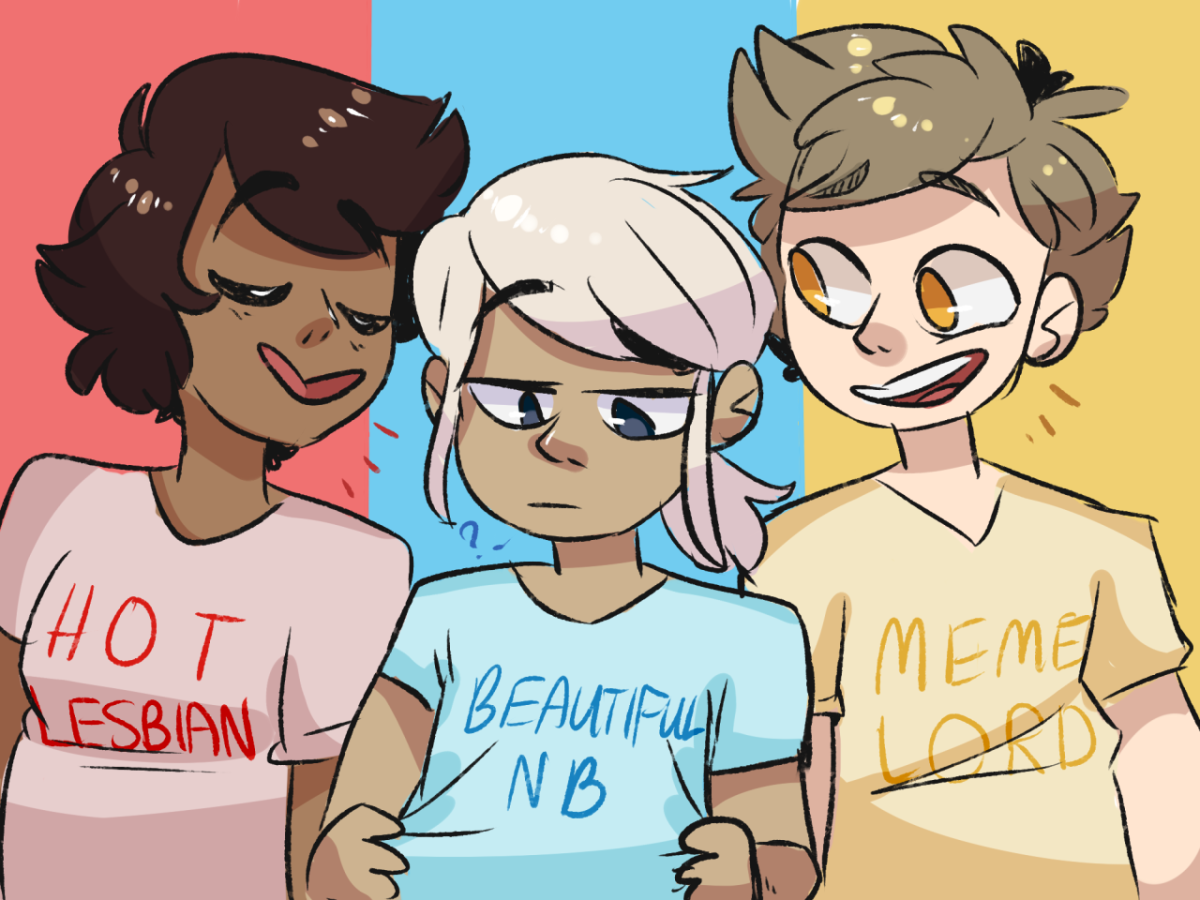





Published: Aug 7, 2016 11:00 am